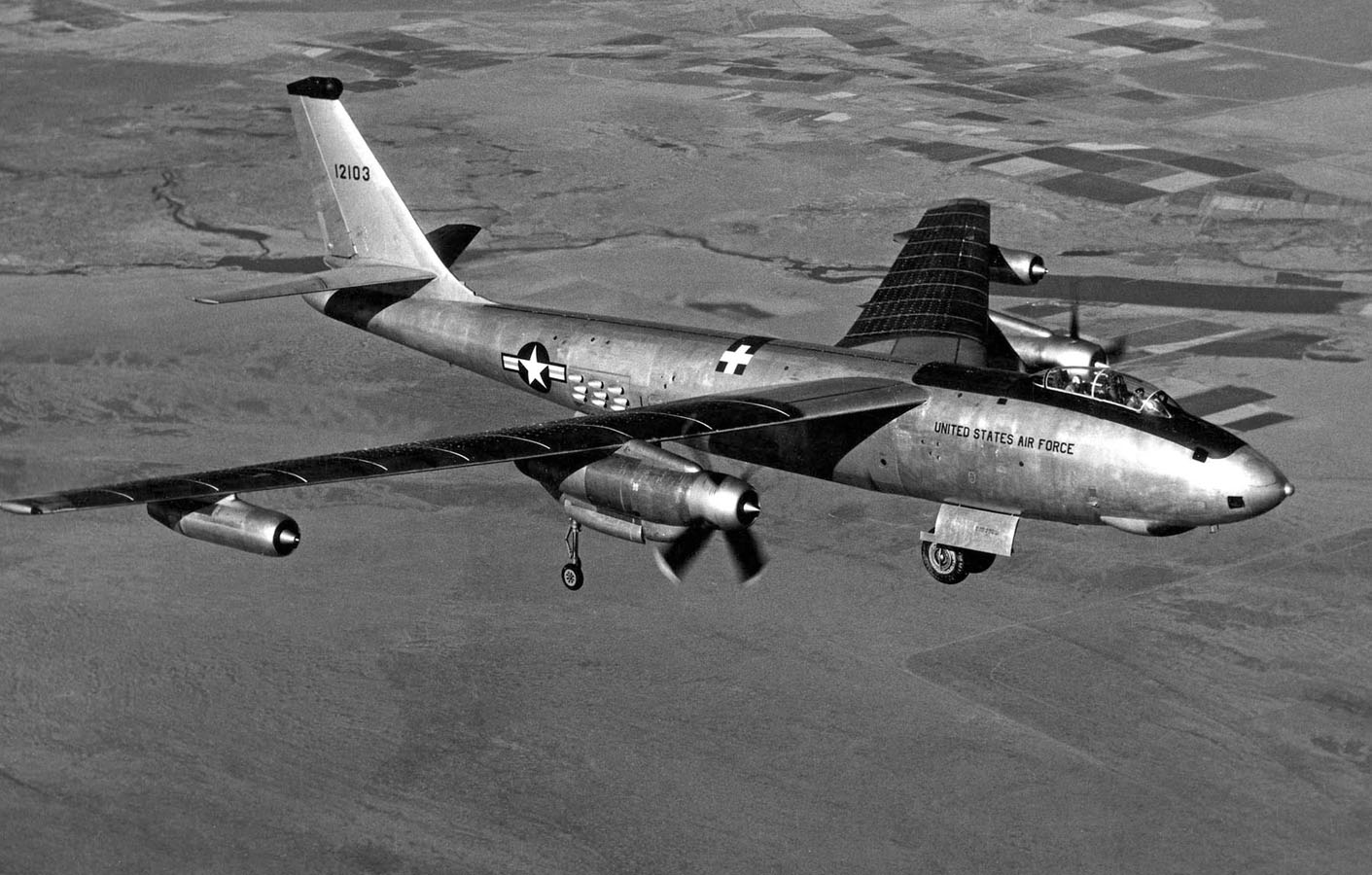By Steve Pace
Photo courtesy of the Museum of the United States Air Force
Hoping to get an increased unrefueled range at a high cruising speed of nearly 600 miles per hour, the Boeing Airplane Company – authorized to proceed in April 1951 — built two composite-powered versions of its six-jet Stratojet designated XB-47D under USAF Air Materiel Command Secret Project MX-1637; Boeing model numbers 450-162-48 and 450-162-49. As composite-powered demonstrators, the two four-engine XB-47D airplanes were each powered by two 8,500 shaft horsepower Wright YT49-W-1 turboprop engines and two non-afterburning 5,910 pounds thrust General Electric J47-GE-23 turbojet engines. The Wright YT49-W-1 turboprop engines turned reversible 15-foot diameter Curtiss four-bladed propellers. The first XB-47D was a modified B-47B-30-BW (51-2103), and second was a modified B-47B-25-BW (51-2046).
The Wright YT49-W-1 was a turboprop version of the British license-built Armstrong Siddeley Sapphire turbojet engine designated J65. The program was delayed by problems with the T49 engine, which failed to pass its 50-hour qualification run. Additional problems with the engine-propeller combination and shortages of government furnished equipment delayed progress still further. It was not until late 1955 that the aircraft were ready for their first flights.
Boeing test pilot Samuel Lewis “Lew” Wallick Jr. piloted the first flight of the number one XB-47D on August 26, 1955. The second XB-47D made its first flight on February 15, 1956, again with Wallick at the controls. Both first flights were made at Boeing Field in Seattle, Washington. Maximum speed reached during flight-test was 597mph (519 knots) at 13,500 ft. (4,115 m) making it the fastest combined turboprop- and turbojet-powered airplane to fly. However, this was accomplished at full-power settings and fuel consumption was excessive. Finally, as demonstrated, the XB-47D achieved a best cruise speed of 402 nautical miles per hour (462mph) at 42,400 feet (12,923.5 m) altitude. Thus, its all-jet-powered B-47 Stratojet counterpart was preferred and the XB-47D project was abandoned.
The XB-47D was 106 feet, 8 inches long (32.5 meters), 27 feet, 9 inches (8.5 m) high with a wing span of 116 ft. (35.3 m). Its maximum gross takeoff weight was 184,428 pounds (83,655 kilograms), and its maximum unrefueled range was 5,759 nautical miles (6627 kilometers). It was to have a three-man crew: pilot, copilot/gunner, and navigator/bombardier.
As it turned out in aviation history, the USAF never did employ composite-powered turbojet/turboprop attack, bomber or fighter aircraft. But it has employed turboprop-powered transport aircraft such as the Lockheed C-130 Hercules series of cargo airplanes.
















